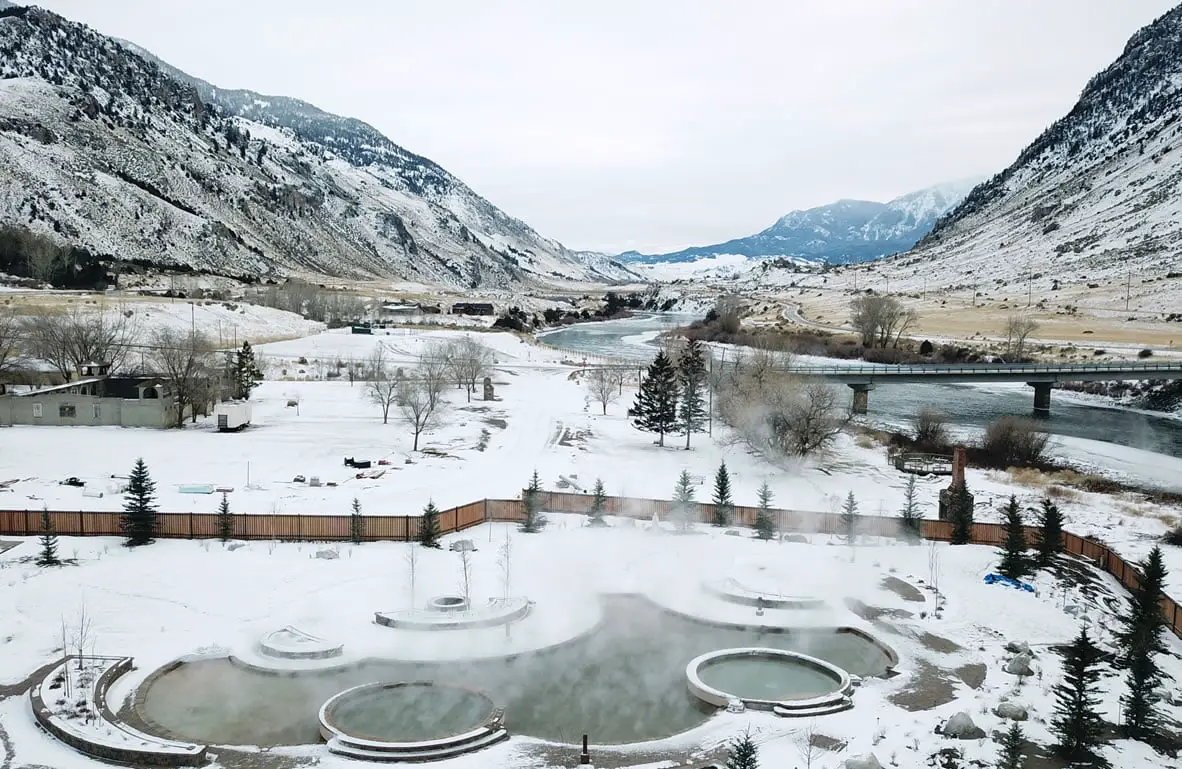Discover the wonders of hot springs in the United States with our comprehensive guide. From the picturesque landscapes of Colorado to the mineral-rich springs of Arkansas, we’ve got you covered. With state-specific guides, advice on accessibility and accommodations, and insights into the unique characteristics of each spring, we are your ultimate resource. Whether you’re seeking health benefits, family-friendly spots, or wheelchair accessibility, we have something for everyone. And now, let’s dive into the intriguing question that many of us have wondered: can hot springs in Montana freeze in winter?
Can Hot Springs in Montana Freeze in Winter?
Hot Springs in Montana: A Brief Introduction
Montana, known for its stunning landscapes and diverse natural wonders, is also home to several hot springs. These geothermal features have long attracted visitors, offering relaxation and therapeutic benefits. However, one common question that arises is whether these hot springs can freeze during the winter months. In this article, we will explore the factors that influence the freezing of hot springs in Montana and provide insights into how these unique natural formations can be protected during the colder seasons.
The Effect of Winter on Hot Springs
Winter brings frigid temperatures to Montana, with lows often dropping well below freezing. This drastic change in weather prompts many to wonder if hot springs, which are naturally heated by geothermal activity, can still maintain their warmth during the cold season. While it is true that some hot springs may cool down slightly due to the colder ambient temperature, most hot springs in Montana do not freeze entirely. The combination of geothermal activity and other factors plays a crucial role in preventing these hot springs from freezing over completely.
Factors That Influence Freezing
Several factors can influence whether a hot spring in Montana freezes or remains warm during the winter months. These factors include geothermal activity, spring size and water flow, proximity to a heat source, altitude, and human intervention.
Geothermal Activity and Winter Weather
Geothermal activity is the primary reason hot springs maintain their warmth despite freezing temperatures. Deep within the earth, heat is produced through the natural radioactive decay of elements. This geothermal energy warms the surrounding rocks and water, creating hot springs. Even in winter, when the air temperature is freezing, the heat generated from the earth’s core is usually sufficient to keep the water in the hot springs from freezing completely.
Montana’s Cold Climate and Hot Springs
Montana is known for its cold climate, particularly during the winter season. However, the extreme temperatures experienced in the state are not significant enough to freeze most hot springs. Thanks to the geothermal activity beneath the surface, the water in these springs remains warm, providing visitors with a soothing and relaxing experience even during the coldest months.
Spring Size and Water Flow
The size of a hot spring and the flow of water within it can also affect its susceptibility to freezing. Larger springs with a higher volume of water generally have a greater capacity to retain heat. Additionally, hot springs with a steady flow of water are less likely to freeze compared to those with stagnant or slow-moving water. The constant circulation of water helps distribute the heat evenly, preventing freezing in most cases.
Proximity to Heat Source
The proximity of a hot spring to its heat source can significantly influence its vulnerability to freezing. Hot springs located closer to the heat source, such as underground magma chambers or hot rock formations, are more likely to remain unfrozen throughout the winter. These springs benefit from the proximity to intense heat, which ensures the continuous flow of warm water, even in freezing temperatures.
Altitude and Freezing Temperatures
Altitude plays a role in determining the freezing point of water. As elevation increases, the air temperature tends to drop, consequently lowering the freezing point of water. However, hot springs in Montana are often located at lower elevations, where freezing temperatures are not as severe as in higher mountainous regions. As a result, the water in these springs remains warm, even when temperatures dip below freezing.
Human Intervention and Hot Springs
Human intervention can influence the freezing of hot springs in Montana. Some hot springs have been developed into commercial facilities, where the water is actively regulated and maintained at a consistent temperature. These facilities typically have mechanisms in place to prevent freezing, such as insulation or heating systems. As a result, visitors can enjoy warm and comfortable hot springs throughout the year, regardless of the external weather conditions.
Protecting Hot Springs During Winter
While hot springs in Montana generally do not freeze over completely, it is still important to take precautions to protect these natural treasures during the winter months. Visitors can help preserve the integrity of hot springs by following a few guidelines. First, it is crucial to respect any posted rules or regulations for hot springs access. These guidelines are often in place to ensure the safety and preservation of the area.
Second, visitors should avoid introducing foreign materials into the hot springs, such as soaps, lotions, or other contaminants. These substances can disrupt the delicate balance of a hot spring’s ecosystem and have damaging effects on the local environment and wildlife.
Third, visitors should be mindful of their impact on the surrounding area. This includes staying on designated trails, camping only in designated areas, and properly disposing of any trash or waste. By minimizing our ecological footprint, we can help protect the natural beauty of hot springs for future generations to enjoy.
In conclusion, while the extreme winter temperatures in Montana may lead some to question whether hot springs freeze, the majority of hot springs in the state remain warm throughout the year. Factors such as geothermal activity, spring size, water flow, proximity to heat sources, altitude, and human intervention all contribute to the ability of hot springs in Montana to resist freezing. By understanding and respecting the unique characteristics of these natural wonders, we can continue to enjoy their therapeutic benefits while ensuring their long-term preservation.





